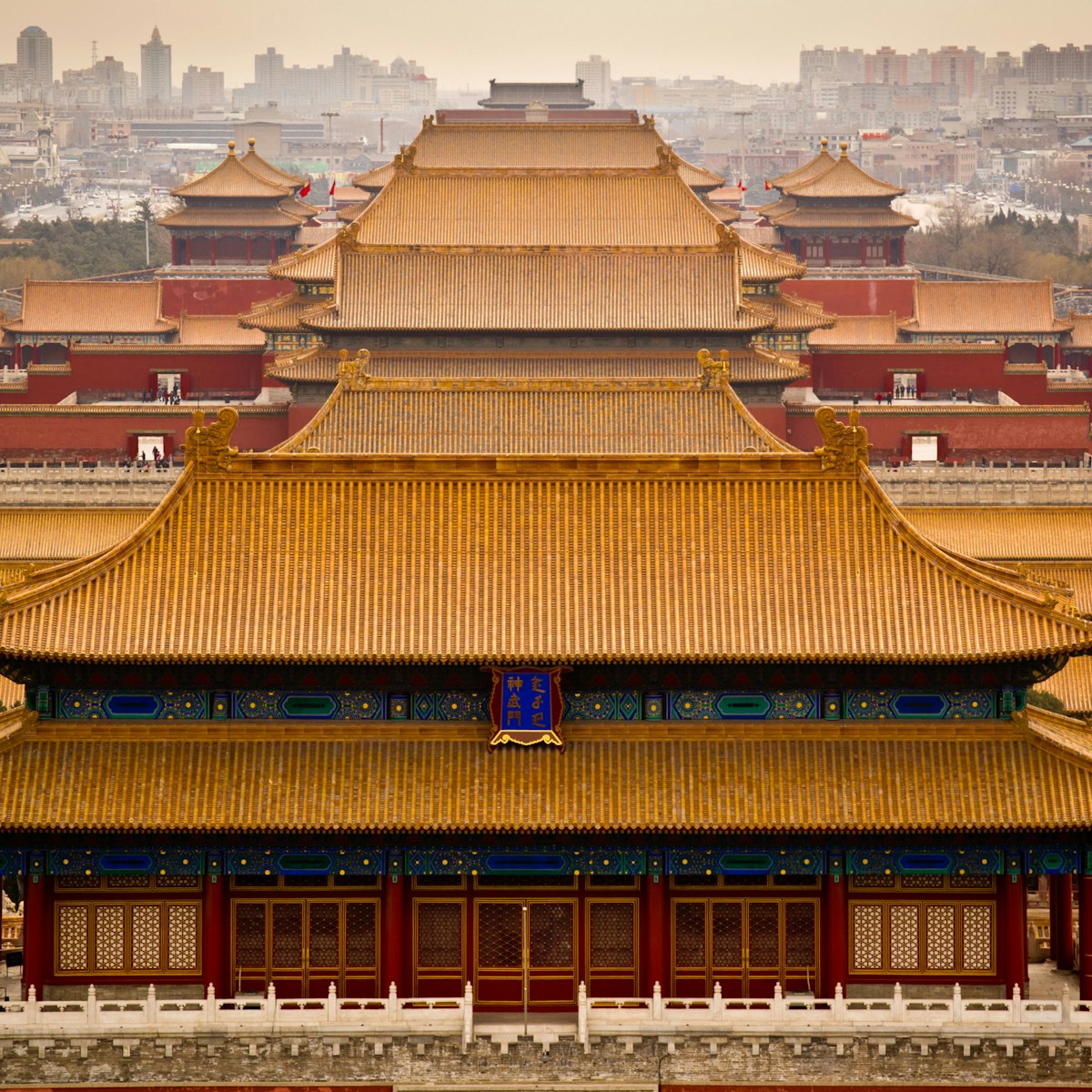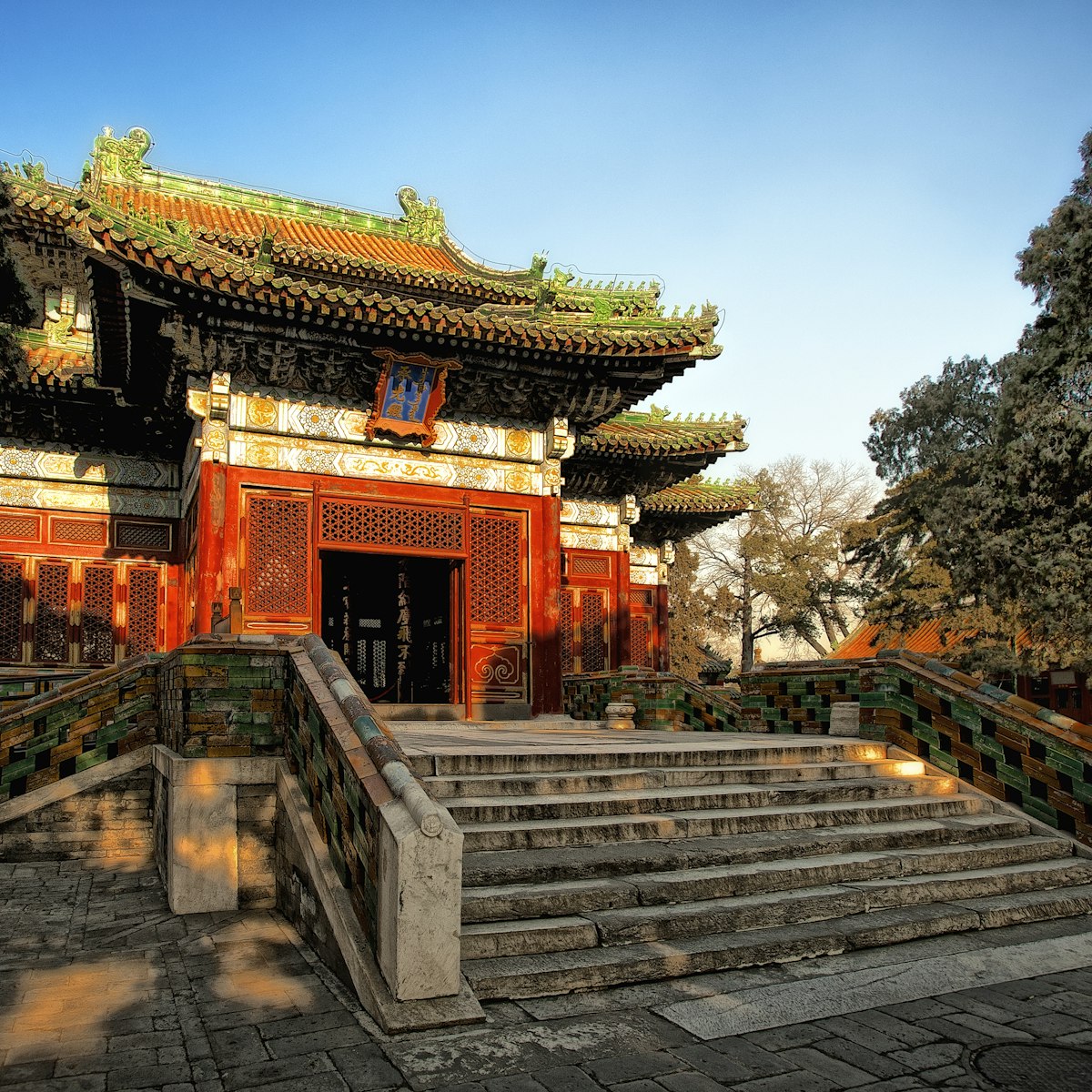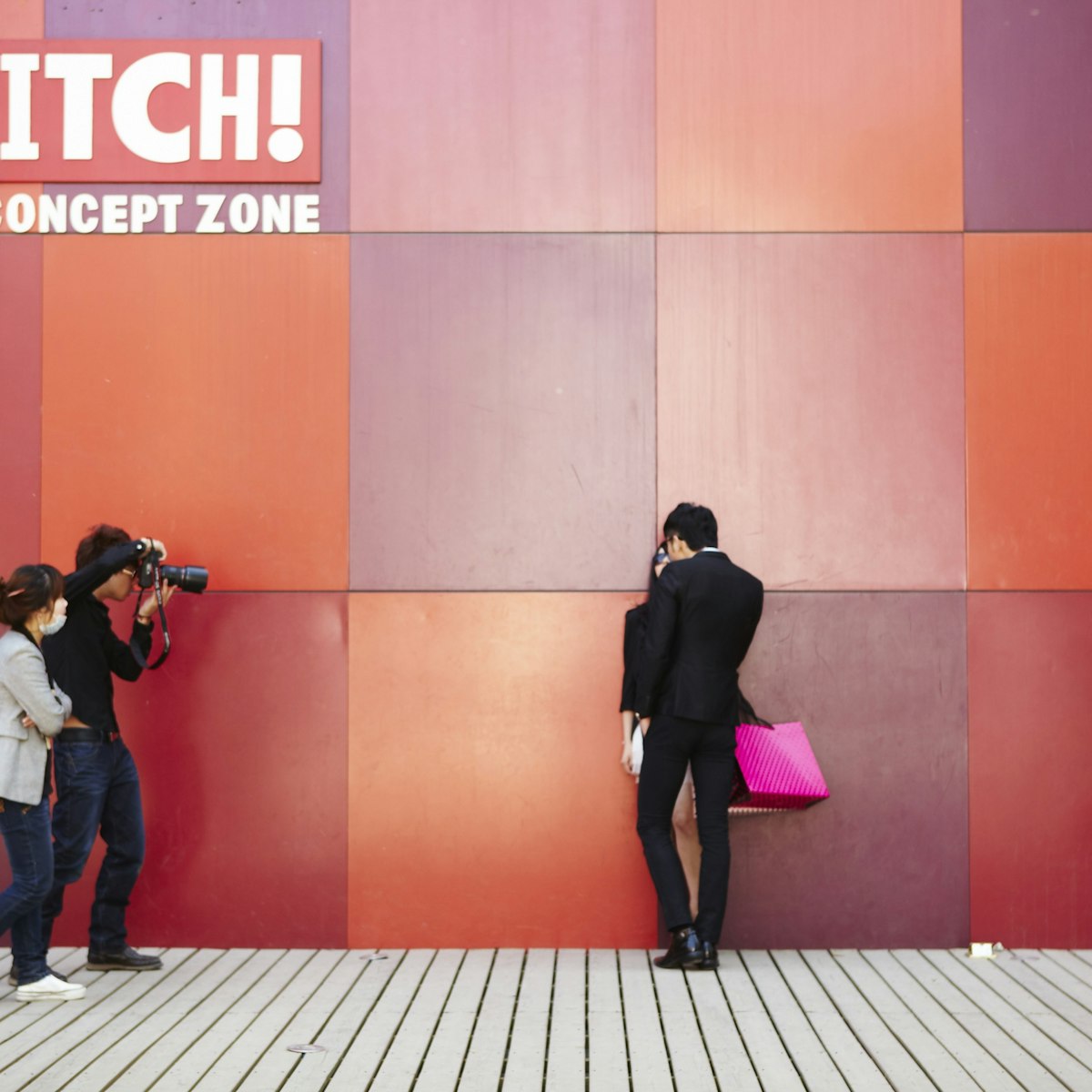If any Beijing sight can vanquish the dreaded 'temple fatigue', it's Wuta Si. This little-known gem is eminently worthy of a pilgrimage, not just for its remarkable design, which owes more to India than imperial China, but also for the magnificent scatter of ancient stonemasonry – statues, stelae, altars and thrones – salvaged from sights around Beijing and plonked here for posterity.
Built in 1473 for a visiting Indian lama, Zhenjue (Diamond Throne Pagoda) as it was called, was one of many temples lining the imperial waterway linking the capital with the northwest palaces. This one was a particular favourite of the Qing emperors – Qianlong threw two lavish birthday parties here for his mum, and had a similar pagoda built at the Azure Clouds Temple. But by the end of the dynasty, neglect, fire and general upheaval had seen off its six wooden halls, and so it became known for its remaining standout feature, the all-stone Wuta (Five Pagodas).
Inspired by the Mahabodhi Temple in India, the boxlike Wuta is pockmarked on all four sides by hundreds of images of Buddha, each with unique mudras (hand gestures), above a band of elephants, deities and Buddhist symbols, with Sanskrit trimming the base. Among its crown of five stupas, the yellow glazed-tile roof was a later Qing dynasty embellishment, effectively a seal of approval for royal use.
In lieu of its long-lost temple halls, foundations of which can still be seen, the relatively empty grounds have been given over to the Beijing Art Museum of Stone Carvings, and are full of inspiring slabs of sculpture and stonework, many dating back to the Mongol Yuan dynasty and some as far back as the Eastern Han.
For more temple action, stroll west along the riverbank and you'll come to Wanshou Temple in 20 to 30 minutes.







